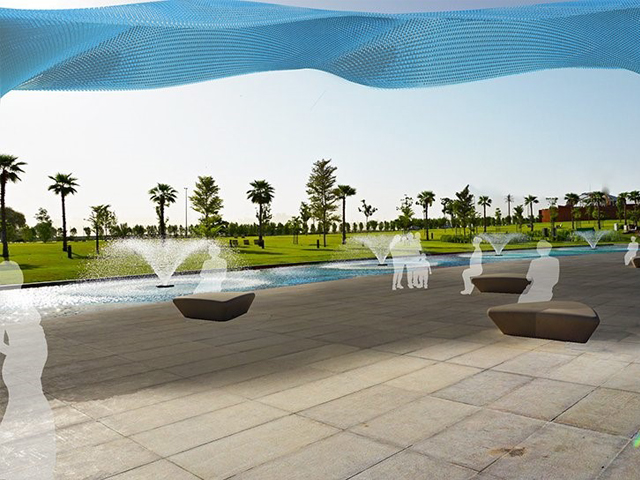‘MARTIAN LANDSCAPE’ FOR BEIJING KINDERGARTEN
26 Nov 2020
The courtyards, interior, theater and floating roof of the kindergarten is designed to make kids feel like they’ve entered a whole new world.

Combining the vibrant colours of the ‘martian landscape’ with the traditional architecture of Beijing, the ‘Yuecheng Courtyard Kindergarten’ gives children a feeling of freedom and adventure. 
In 2018, MAD architects revealed plans to build the ‘Yuecheng Courtyard Kindergarten’ next to a senior citizen’ apartment in Beijing. The site, covering an area of 9,275 square meters, consisted of an original 18th century Siheyuan courtyard, an adjacent replica courtyard built in the 1990s, and a newly constructed four-story building. Following its completion at the end of 2019, the kindergarten now serves as a pre-school education space for 390 children aged from one to six years old. 
The kindergarten is named after the client, and reflects Yuecheng’s ‘intergenerational integration’ ethos that blends pre-school education and elder care. “When I looked back at my own kindergarten years, and even the ones I saw after I grew up, I always wondered what it is that kids long for the most,” says Ma Yansong, founder of MAD. “Perhaps it is freedom and love. a kindergarten doesn’t always have to offer complex hardware or fixtures, but it must always make kids feel freedom and love — something that leads them to endless possibilities.” 
In shaping the project, MAD chose to remove the replica courtyard outside the historic 18th century original, and replace it with a new space that encompassed the Siheyuan courtyard. The new space adopts a low and gentle posture, with a flowing motion contrasting the strict, orderly layout of the historic structure. This tension, emerging from different dimensions in time, gives the complex a renewed life. As the architects say, “the new does not overshadow the old, while the past does not overtake the present.” 
MAD explains that the new building forms a floating roof that appears as a “martian landscape of sorts”, enticing children to run, play, and interact with it and each other. The canopy also connects a variety of independent spaces, while making people feel as if they have entered a whole new realm — standing in contrast to the historical architecture of old Beijing. 
Meanwhile, at ground level, three courtyards — providing light, ventilation, and additional outdoor space — are articulated around several of the original site’s existing trees. “The courtyards, in particular, reflect an oriental view of nature,” explains Ma Yansong. “Here, nature becomes the main subject, and the architecture instead revolves around it. In the courtyard there is nature, the world, and human life, acting together to form the core of the architecture.” 
Responding to the sensitive sense of scale and comfort experienced by children, the project’s interior is suspended from a single aluminum grille, which lowers the visual height of the scheme while instilling the interior with an intimate atmosphere. Floor-to-ceiling glazing not only illuminates the interior, but also forms visual connections with the ancient courtyard house. 
The transition space from the first floor to the sunken level on the east side of the lobby is designed as a theater — the top of which is surrounded by a circular wall of bilingual cartoon books. The theater stage doubles as the entrance to a two-level indoor playground, which not only serves as a space for children’s activities, but also a place for the whole kindergarten to hold art and sporting events. 
Meanwhile, the west side of the lobby leads to a learning area. Here, the different mixed-age learning groups are separated by curved walls at regular intervals. The triple-entry courtyard house, connected to the new space via courtyards and corridors, serves as a place to host the children’s extracurricular cultural, artistic, and creative activities, as well as an office for staff.
Images by Arch-Exist, Hufton + Crow and Tian Fangfang, via designboom







